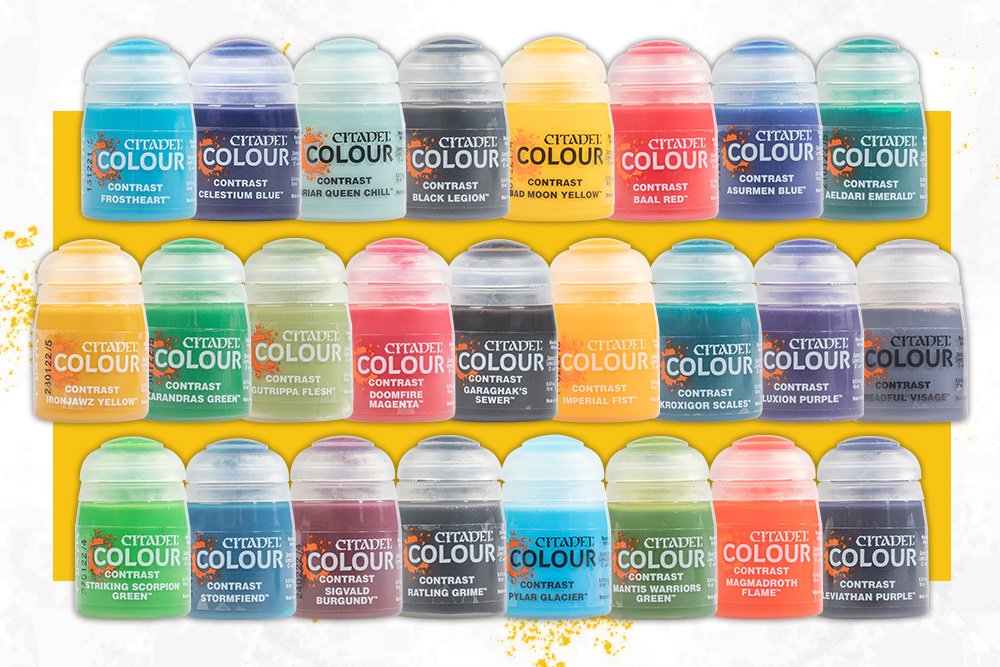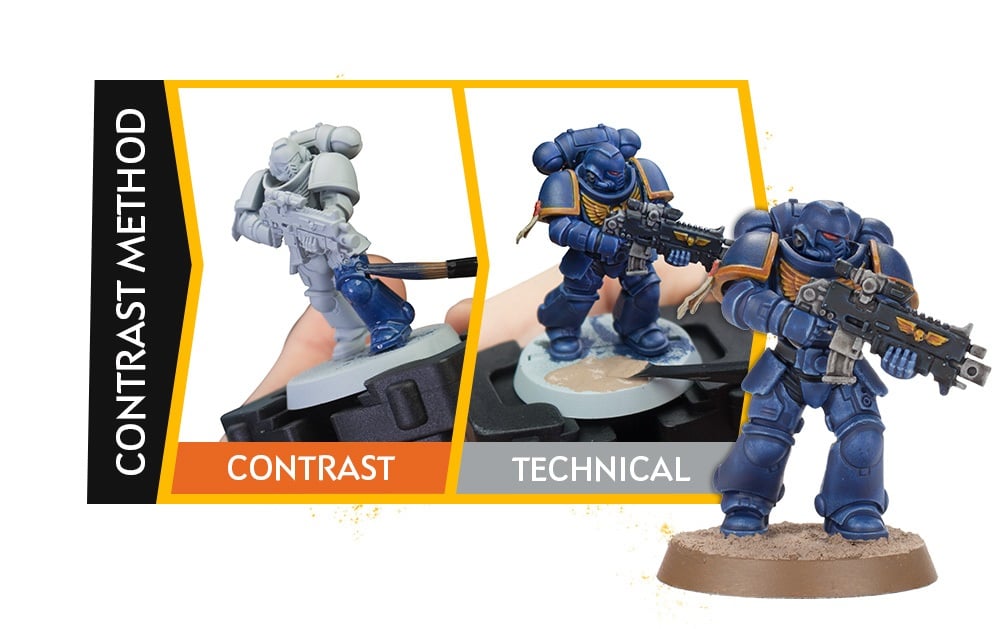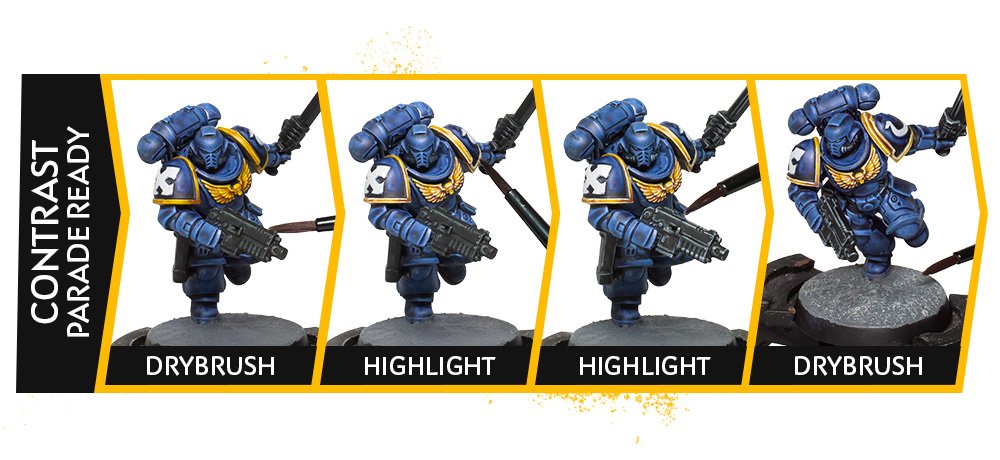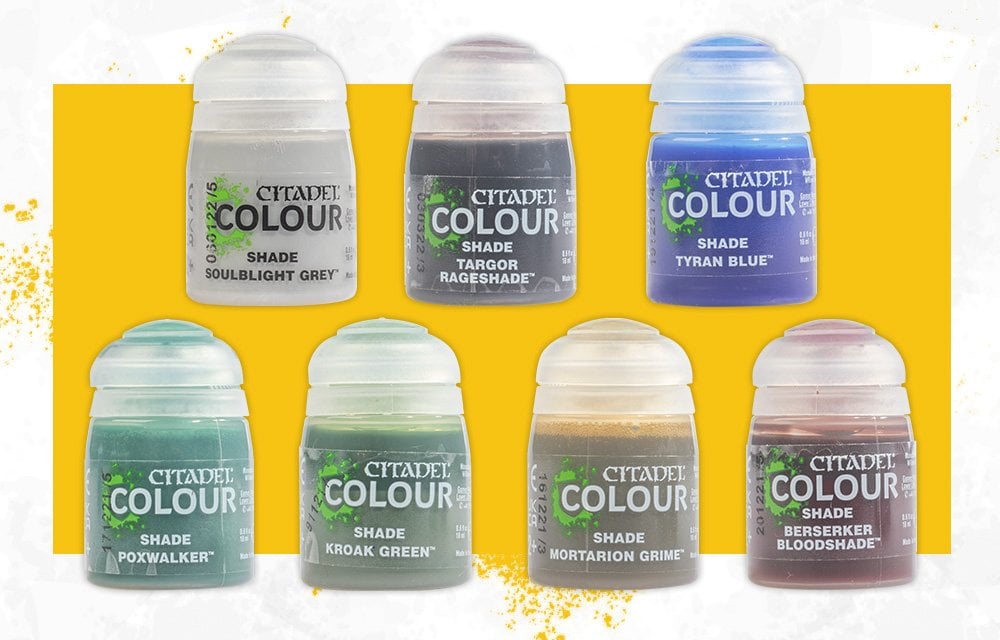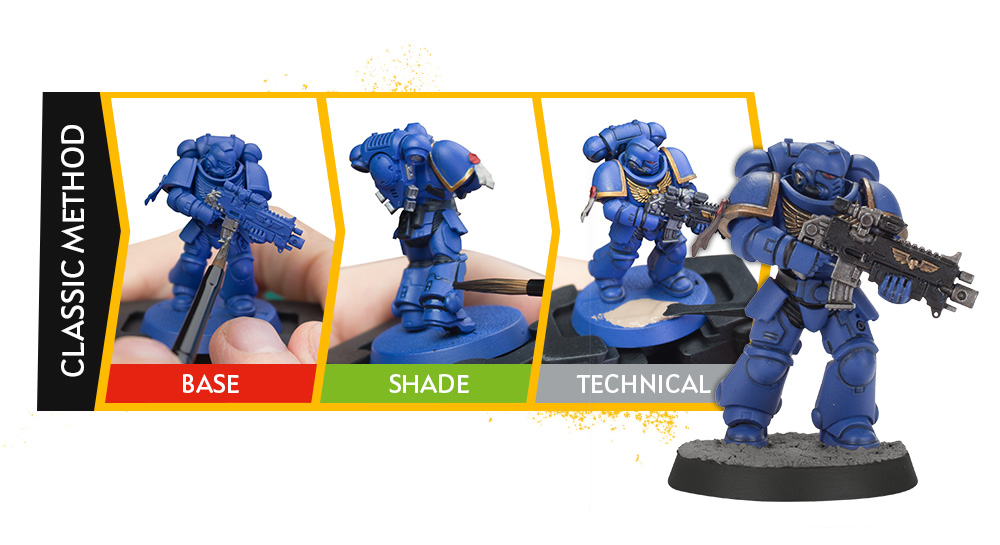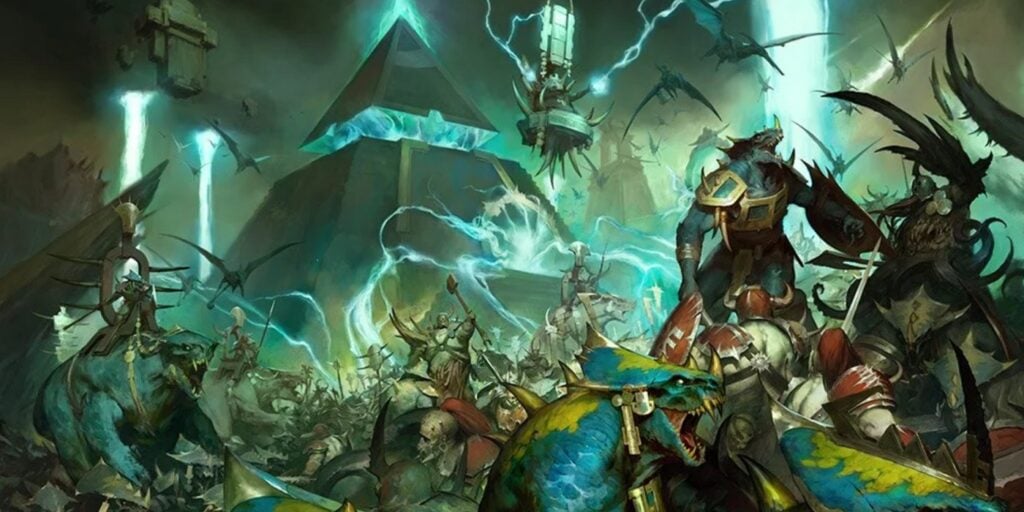Games Workshop: Contrast Vs Shade
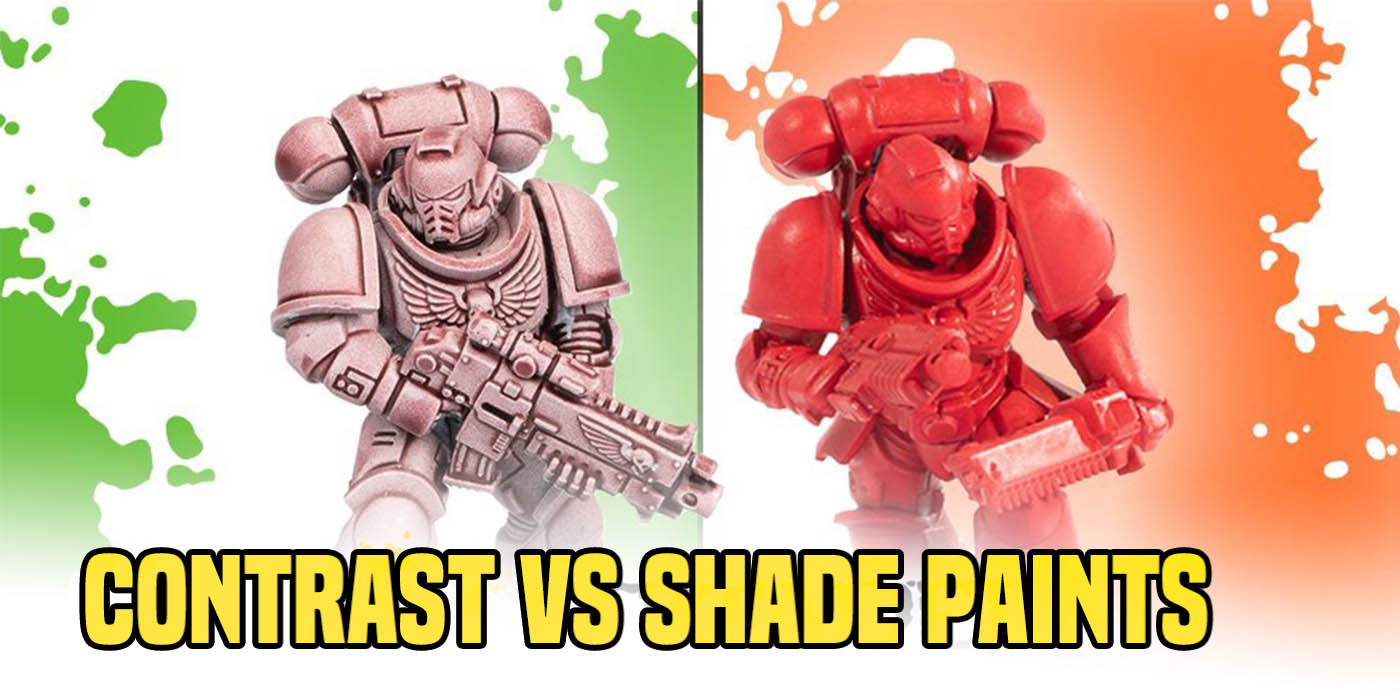
With a bunch of new paints out Games Workshop answers the question: What’s the difference between Contrast and Shade Paints?!
If you’re a veteran hobbyist you probably know the answer to this question. However, if you’re new to painting and hobbying then you might not. But that’s okay! Everyone had to start somewhere and today GW is answering one of those hobby questions that should probably be asked MORE. This is the difference between Contrast and Shade Paints:
Contrast Vs Shade Paints
The main thing to realize is the difference between the “flow” of these two paints. Contrast, in many ways, is designed to “stick around” on the surface of your models. It’s kind of like a basecoat and a wash all in one. You’ll get a nice solid foundation to keep as is or build off from if you so choose. In most cases, you really only need a single coat of Contrast Paints to get good, consistent results as well.
The contrast method is quick and totally acceptable for getting your models painted and on the tabletop. And again, this is a great launching point to build off from. With a few more steps you can get some really amazing results:
So what the heck is shade paint then? Shade paint works different from Contrast. It’s designed to “flow” more and to end up in the recesses of the model to provide…shade.
Shade is great for all manner of uses. It’s thin enough so that the undercoat and still come through while adding a different tone on top. It’s great for giving models more “depth” in color range and more gradient from a highlight down to the Shade color in the recesses. Using Shade paint, you can get some very clean lines that make the details pop:
You can also use Shade to take the brightness of a color down a level to add a bit more realism or grime. It’s a great tool to use on top of a Base and, before Contrast came around, was probably one of the fastest ways to paint models. Lots of armies were painted by blocking off colors via a few Base colors then using a Shade like Nuln Oil, Agrax Earthshade, or Seraphim Sepia to add that richness and depth. There’s a reason Nuln Oil was also called “Cheating for Painting” because of the results you could get.
Either one of these types of paints is a great tool to have in your tool box. Base+Shade is still a go-to for lots of hobbyists. Contrast paints can also be used with Base paints to get some interesting results. Really, it’s a lot about experimenting and playing around with techniques to get the results you want. Personally, I use both types of paints in many of my projects. So try them out and see what works best for you!
Want to know what the new Contrast Paints look like? Check out our video going through the new paints:

